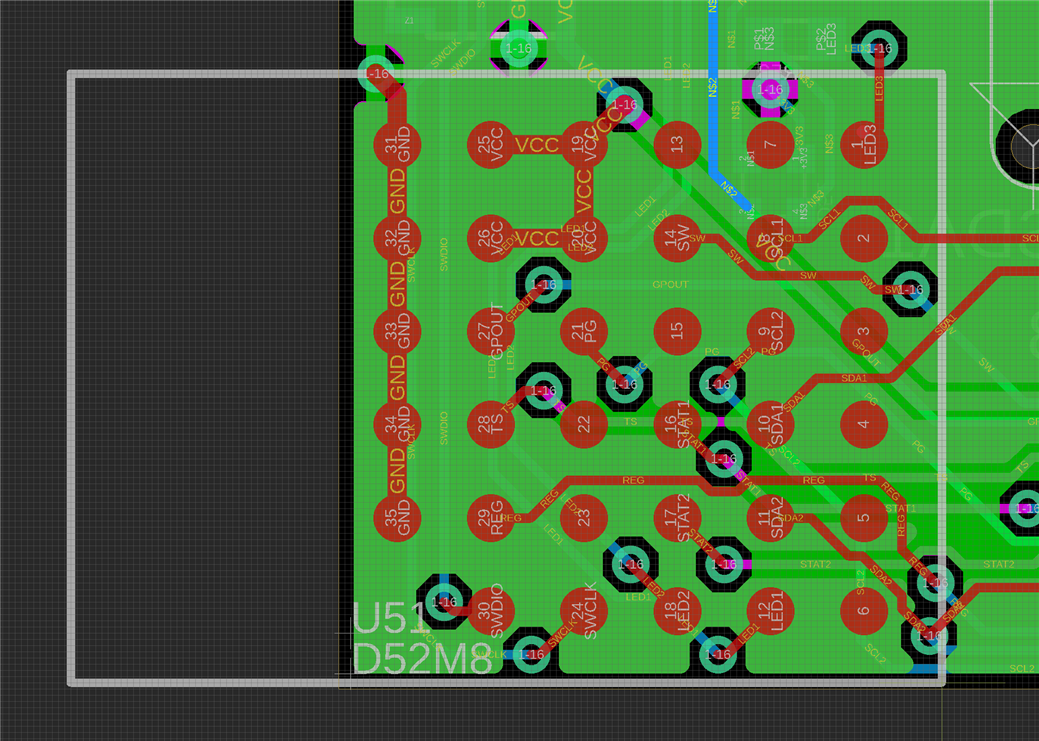I am using the NRF52832 chip on a D52M M8 module, and SDK 15.2.
I have a number of sensors that I am communicating with over TWI using the TWI Manager on two separate channels. The read transfers are scheduled on a timer running at a period of 240/32768.
Meanwhile I have an ANT broadcast master channel running at a period of 4096/32768.
Running ANTWare in scan mode it skips 1-2 messages exactly once every 15 ANT cycles (every 1.89s). This is very consistent so I believe the ANT message is not being sent. The ANT ovserver callback function is running when I would expect though so the message is queued, just not sent.
For testing I am sending the time in microseconds in a test ANT packet, and so i can compare the ANT data with logs i create on the unit, in which i also log the twi status. The attached excel shows this data. Hopefully clear what everything means.
This proves that when the ANT event coincides with a TWI transfer (i.e. in the period where a TWI transaction has been scheduled, but the callback hasn't returned yet) I still get log messages from my ANT callback, but no data is received in ANTWare. I therefore believe the message is just not getting sent.
For the TWI channels i am using pins 2,3,4,5
From my previous support request ("Use of TWI manager with ANT") I understand that it should be possible to send ANT messages whilst a TWI transfer is in progress.
I have followed the design guidelines in the module spec sheet.
Debugging I have gone as far as I think I am able to as I cannot look inside the softdevice to see what is going on. Are there any suggestions on how to debug further, and/or ideas on what I might be doing wrong - sdk_config.h options etc?




